

 The South African
The South African
The South African Navy Museum can be regarded as the repository and the ‘Memory of the Fleet’. In this respect, the museum recently assisted Navy Headquarters in Pretoria with a request to confirm pennant numbers used by the South African Navy through the years, and more particularly those allocated the prefix ‘P’, for Patrol and Light Forces.
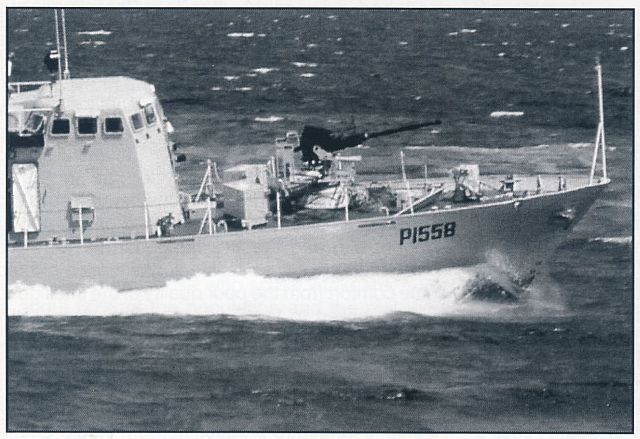
Close-up of a South African Naval patrol boat, showing the pennant number P1558.
The full image appears on the back cover of this journal.
(Photo by courtesy, South African Naval Museum).
The prefix (called a flag superior), identifies the type of ship, and the numerical suffix (called a flag inferior), uniquely identifies the specific individual ship in Naval service. After the Second World War (1939-1945), the Royal Navy adopted a rationalised pennant system to identify the type of ship (as seen below) and several European NATO and Commonwealth navies, including the South African Navy, followed suit:
Navy HQ’s enquiry to the SA Navy Museum was specifically directed to the planning and allocation of pennant numbers to the three new Inshore Patrol Vessels (IPVs), now on order from Damen Shipyard as part of the Project BIRO requirement.
The compilation of the list to provide NHQ with the necessary guidance revealed a fascinating list of South African Navy vessels that were allocated the P- prefix (Patrol and Light Forces) pennant through the years. (The complete list is provided below).
The first allocation of the prefix ‘P’ was perhaps a bit against the norm, as it was allocated to the two Boom Defence Vessels of the Bar class, the SAS Somerset and SAS Fleur (i). Although originally allocated pennant numbers Z185 and Z173 during the Second World War, the use of the Z-prefix for gate, mooring and boom defence vessels was discontinued after the war and the two vessels were allocated the numbers P285 and P273 respectively. At the time of writing, the process of disposing of the historic SAS Somerset, which had been preserved as a museum ship at the V&A Waterfront in Cape Town since 1988, was underway.
A total of 23 Ford class Seaward Defence Boats were built for the Royal Navy, five of which were allocated to the SA Navy between 1954 and 1959 as part of the Simon’s Town Agreement. The batch of boats were allocated a block of numbers that ranged from P3101 to P3127. The five boats were SAS Gelderland (P3105), SAS Nautilus (P3120), SAS Rijger (P3125), SAS Haerlem (P3126) and SAS Oosterland (P3127). The Fords were built to detect, locate and engage submarines in the approaches to ports and harbours, while Haerlem was converted to an inshore survey vessel in 1963. The class continued in service until 1985.
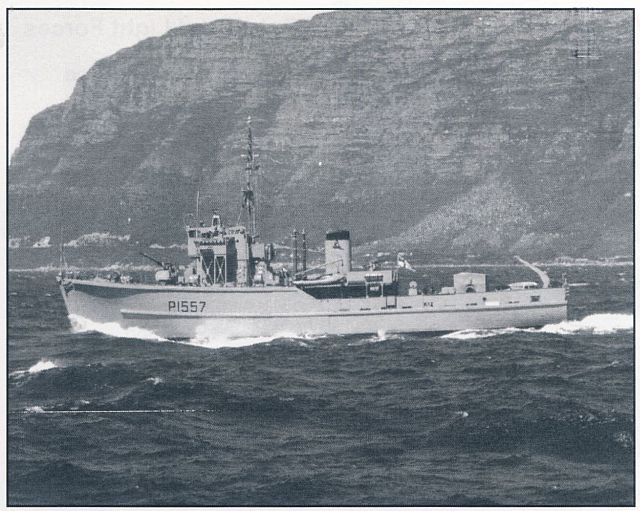
SAS Kaapstad, P1557, was one of the South African Navy’s patrol sweepers.
(Photo: By courtesy, South African Naval Museum).
Three Air-Sea Rescue Launches (ASRL), or ‘crashboats’, as they were also known, were transferred from the Air Force to the Navy at SAS FLAMINGO in Langebaan in 1969. The two Krogerwerft boats (R30 and R31) and the remaining Miami boat (R9) were given pennant numbers P1551 to P1553 on transfer, while two new Tracker ASRLs were added in 1973 and given pennant numbers P1554 and P1555. When these boats were retired (one was lost off Saldanha in 1988) the pennant numbers were reserved and taken up with the delivery of three new locally-built Inshore Patrol Boats from 1992 onward. Simply referred to as ‘T-Craft’, they were only identifiable by their pennant numbers for many years. They were officially commissioned in 2003 as SAS Tobie, SAS Tern and SAS Tekwane.
A surprising addition to the ‘P-forces’ was the allocation of two former Ton class minesweepers in the mid-1970s. From the total of ten Ton class minesweepers taken into service between 1955 and 1959, two were converted to patrol vessels/sweepers. SAS Kaapstad (M1142) and the SAS Pretoria (M1143) underwent conversion to patrol vessels in Simon’s Town in the mid-1970s and, consequently, their pennant numbers were changed to P1556 and P1557 respectively. Both ships were decommissioned in 1985.
The last of three President class frigates were also decommissioned in 1985 and left the South African Navy with the relatively small Minister class strike craft (450 tons) as its major surface combatant. The fleet of nine fast missile-carrying strike craft (and the three Daphne class sub-marines) constituted the main offensive strength of the SA Navy for many years, until the arrival of the new Valour class frigates and Type 209 submarines from 2006. The Minister class strike craft were allocated pennant numbers P1561 to P1569, but in 2007 those that remained in service were reclassified and renamed Warrior class Offshore Patrol Vessels. At the time of writing, SAS Isaac Dyoba (P1565), SAS Galeshewe (P1567) and SAS Makhanda (P1569) continued in service, all based at Naval Base Durban.
A locally-built patrol boat, originally destined for Lake Malawi, was allocated to the South African Navy in 1976. It went unnamed and was simply identified by its pennant number, P1558. It had a varied, under-utilized service career, proved unsuitable for seagoing operations and was eventually sunk as a gunnery target in 1988 as part of Exercise Magersfontein, off Walvis Bay. An article by Captain Ivor Little (Ret), previously published in the Military History Journal Vol 14 No 5, June 2009), tells the fascinating tale of Project Dobbin, the story of a South African patrol boat P1558.
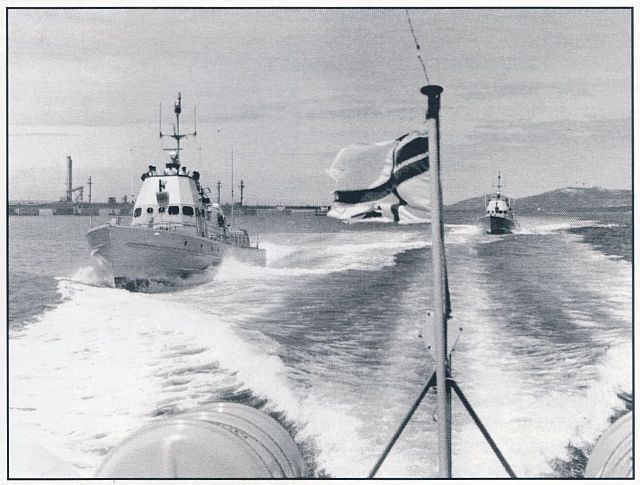
The Air Sea Rescue Launches (ASRLs), P1551 and P1552
(Photo: By courtesy, South African Naval Museum).
The Torpedo Recovery and Diving Vessel, SAS Fleur (ii) was allocated the pennant number P3148. Fleur was laid down, launched and completed in 1969 and was the first operational vessel to be designed and built in South Africa for the South African Navy. The little workhorse served the Navy for 34 years before it was decommissioned in 2004, but, at the time of writing, continued in civilian service as the Fleur du Cap.
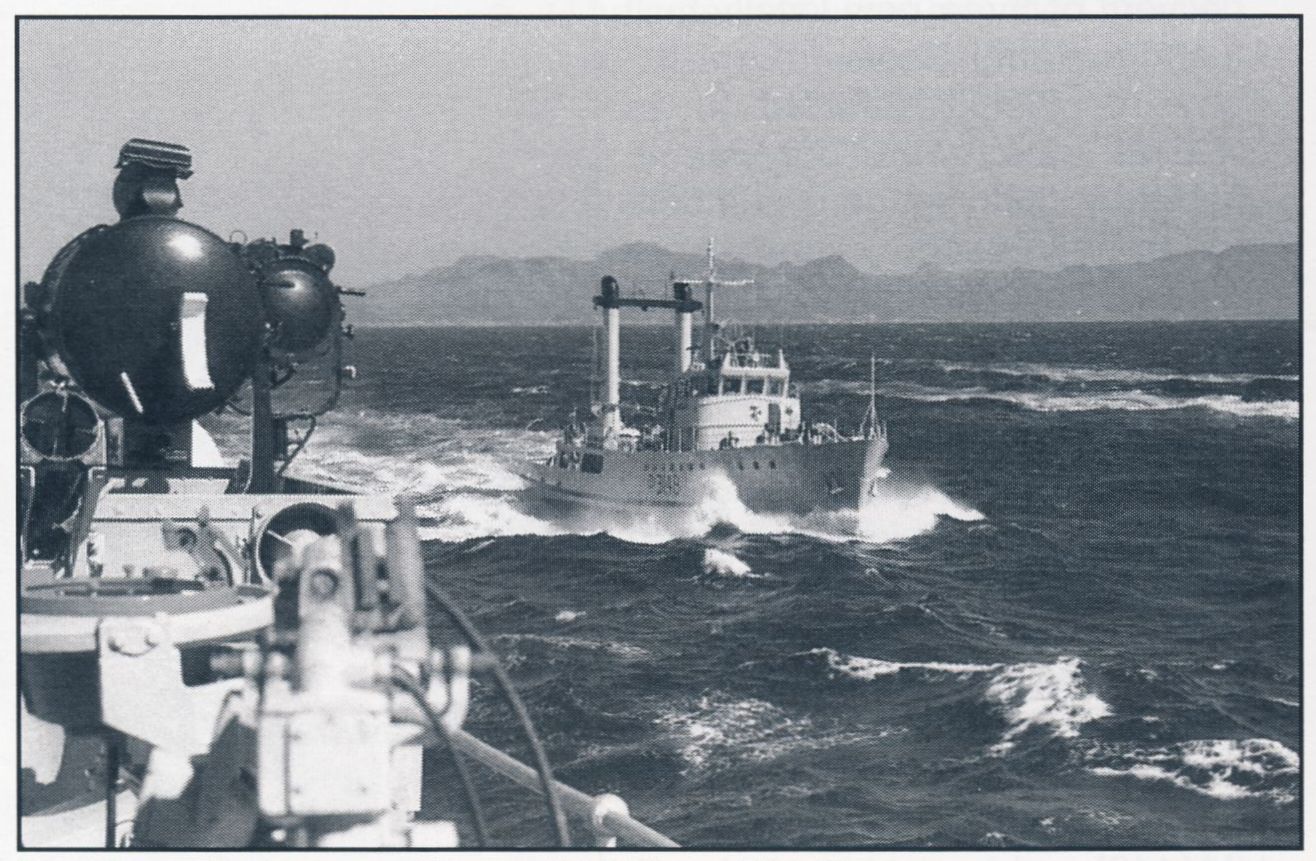
The Torpedo Recovery Vessel, SAS Fleur, P3148
(Photo by courtesy SA Naval Museum)
The new IPVs
During 2018, Armscor placed an order for three Inshore Patrol Vessels (IPVs) from Damen Shipyards in Cape Town as part of the SA Navy’s Project Biro. The three IPVs will be built on the Stan Patrol 6211 design of 62 metres that features the distinctive Sea Axe hull – a straight-edged, axe-shaped bow. With delivery set between 2021 and 2023, it is anticipated that the three IPVs will replace the three remaining Warrior class OPVs, currently based at Naval Base Durban. While the class- name and names of the ships still need to be announced, the pennant numbers P1571, P1572 and P1573 have already been allocated to these vessels.
With that, the three IPVs will become part of a unique gourp of vesselsthat have served the South African Navy with distinction.
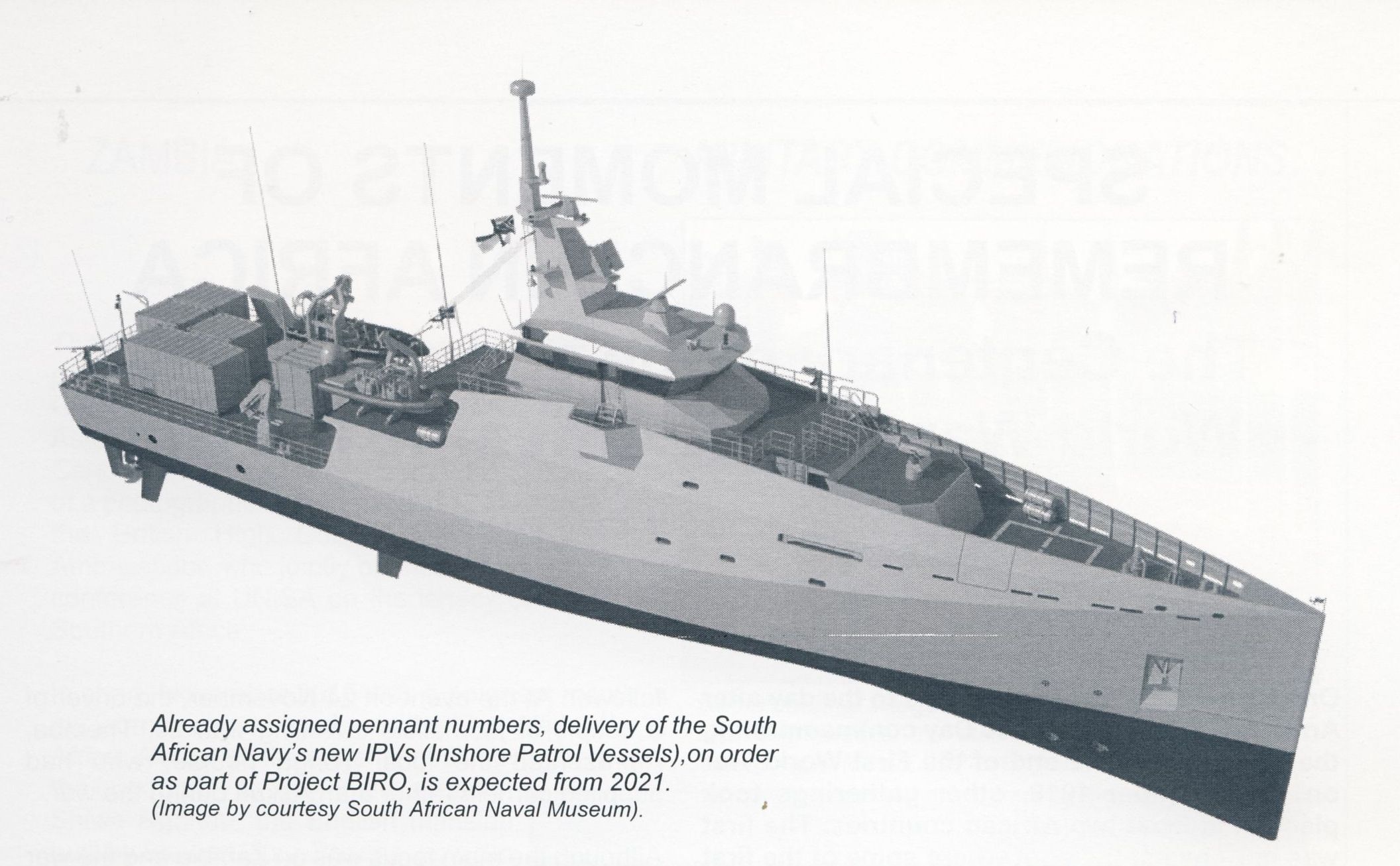
Endnote:
The naval historian Allan du Toit (Rear Admiral retired Royal Australian Navy, who also served in the South African Navy) provided further insight into the NATO numbering system:
‘The SAN, together with many other navies, but not the US, Canada, China and Russia, employ the post-World War Two NATO standard system of ship designators and many of these navies draw their pennant numbers from allocations made by NATO in Annex B of the Call Sign Book for Ship’s (ACP113). The SAN, in the past, sponsored by the UK even after its departure from the Commonwealth in 1961, and indeed in the not so distant past after its return in 1994, drew its pennant numbers from the UK/Commonwealth allocation in ACP113. And Australia, India, Kenya, New Zealand and Malaysia, although non-NATO members, are also still allocated pennant numbers from within this Commonwealth allocation in ACP113. This coordinated Commonwealth and NATO allocation is done to avoid, as far as possible, international duplication and to facilitate rapid identification and communication at sea.
Although the SAN’s pennant numbers, together with those of its sister Commonwealth navies, historically came from, still come from, and are interspersed with the RN’s allocations in ACP113, blocks of pennant numbers can be assigned within the broader allocation, e.g. a block of ‘P’ pennant numbers was assigned specifically to the SAN in the early 1970s, namely P1551 to P1599. So, using P1571 to P1573 does not cause any duplication issues.
Moreover, pennant numbers within the broader Commonwealth allocation can be, and often are, reallocated when a ship decommissions. In the case of the four Valour class frigates, F145 was previously allocated to SAS President Pretorius, F146 to the former Indian frigate INS Kuthar, F147 to SAS President Steyn and F148 to the former NZ frigate HMNZS Taranaki. SAS President Kruger’s pennant number (F150), together with SAS Vrystaat’s pennant number (F157), were subsequently reallocated to the current RAN frigates HMA Ships Anzac and Perth. Similarly, the pennant numbers now allocated to the SAN’s three current submarines (S101 to S103) were previously allocated to HMS Dreadnaught (S101), HMS Valiant (S102) and HMS Warspite (S103). SAS Maria van Riebeeck was S97, SAS Emily Hobhouse, S98, and SAS Johanna van der Merwe, S99. The pennant number S100 was not allocated, and S104 onwards was allocated to HMS Sceptre and her sisters.’ (Du Toit, 2019)
Bibliography
DefenceWeb (27 February 2018): Armscor finally orders inshore patrol vessels for SA Navy, retrieved from https://www.defenceweb.co.za/
Du Toit, Allan, Rear Admiral RAN Ret, personal communication, 20 March 2019.
Du Toit, Allan, South Africa’s Fighting Ships, Past and Present (Ashanti Publishing, 1992).
Wessels, André, Suid-Afrika se Vlootmagte, 1922-2012 (Sun Press, 2017).
Return to Journal Index OR Society's Home page
South African Military History Society / scribe@samilitaryhistory.org